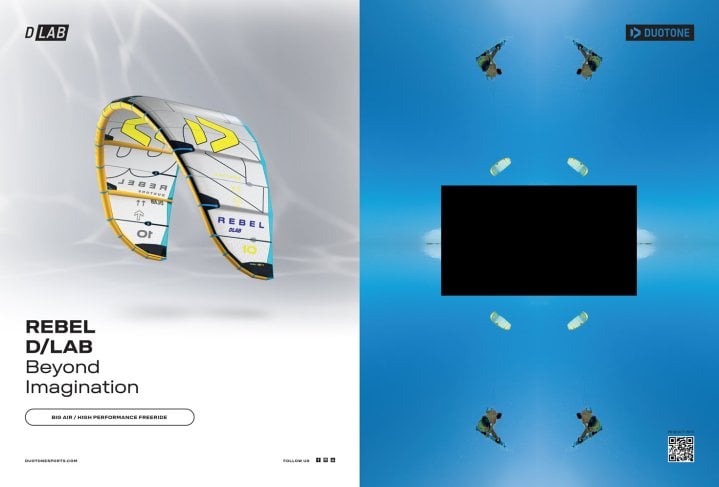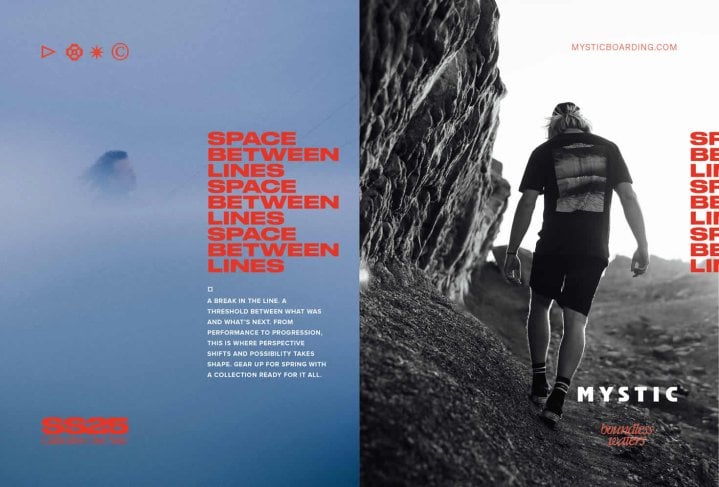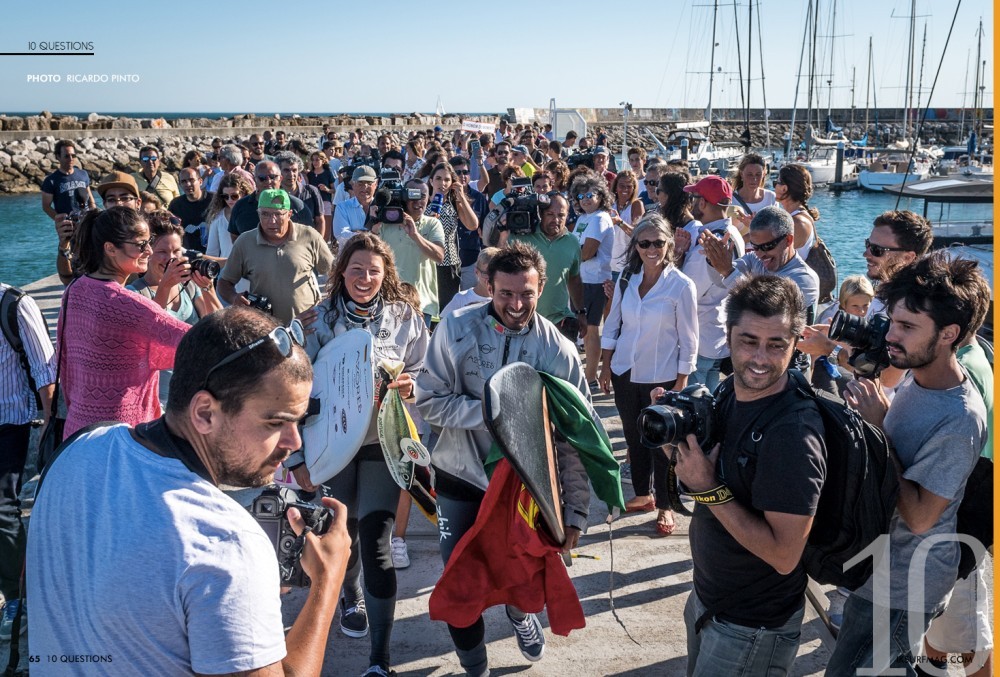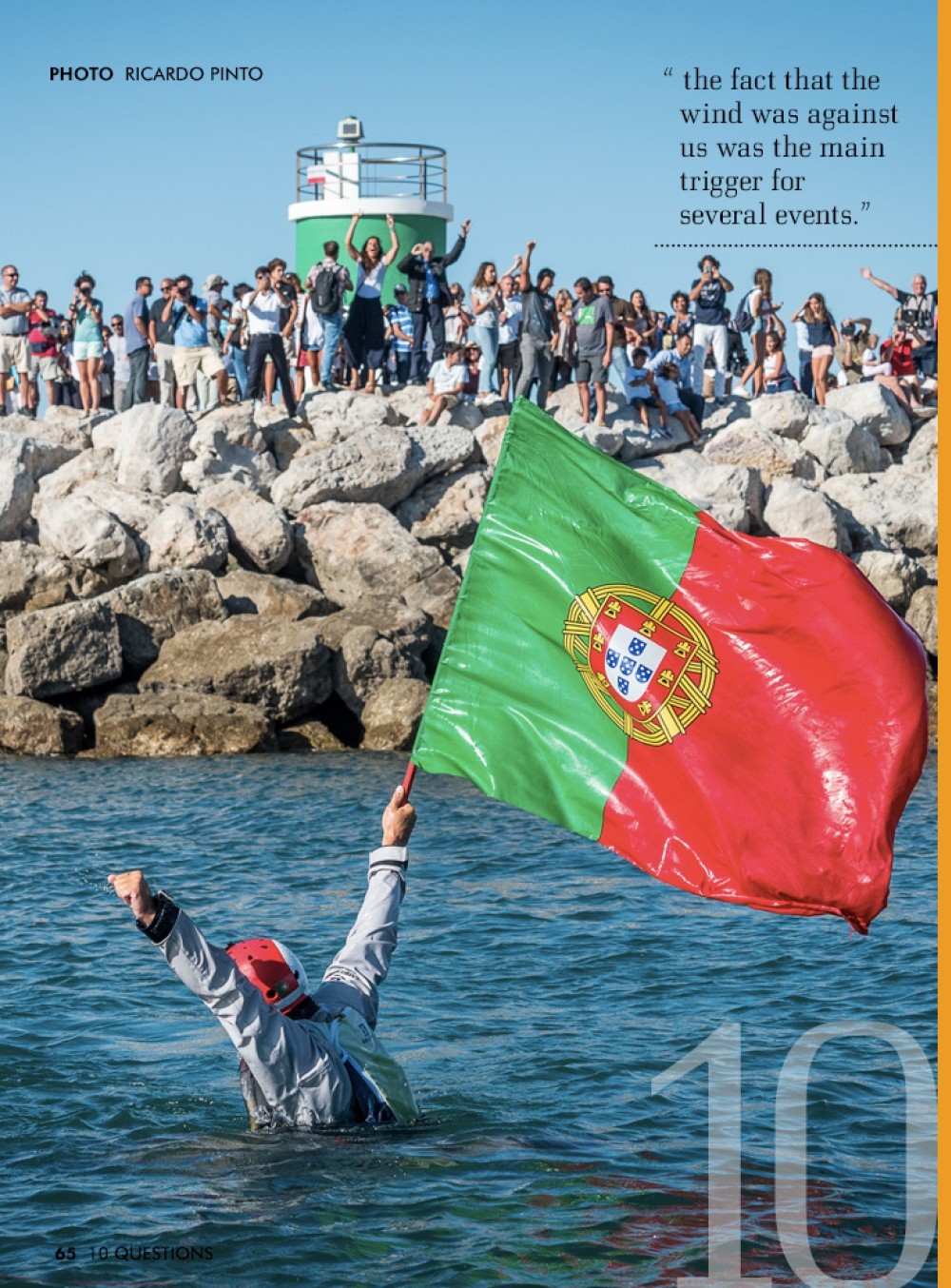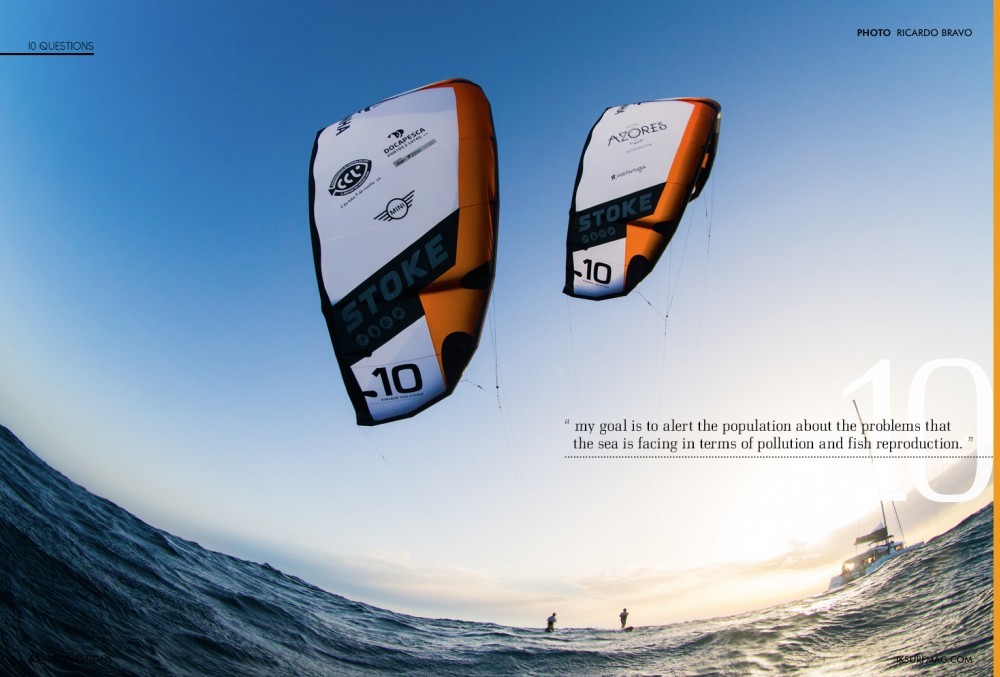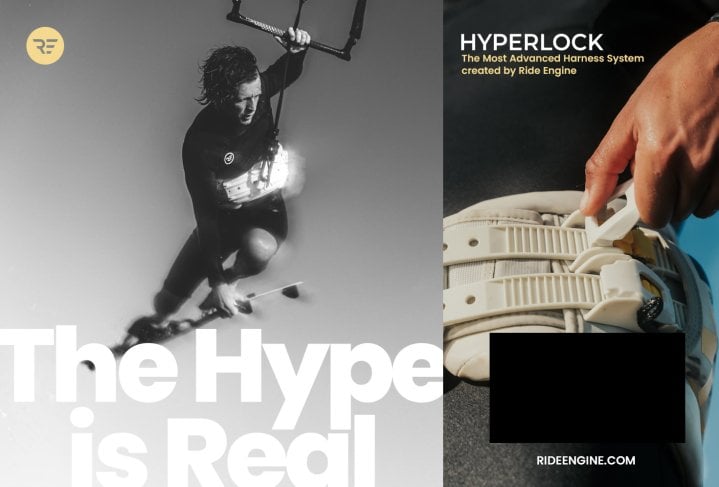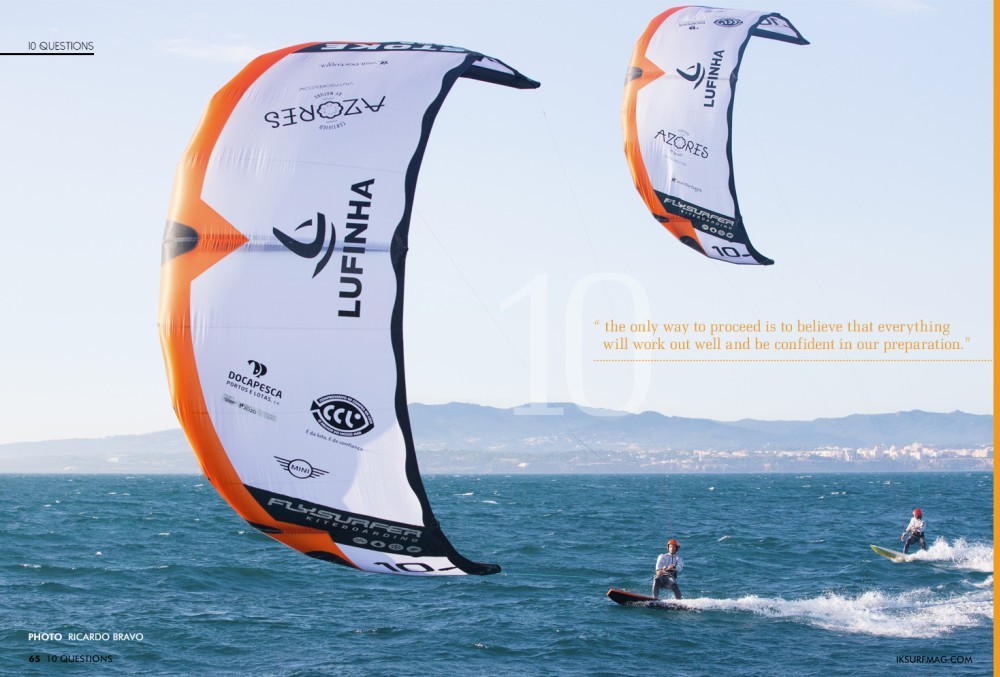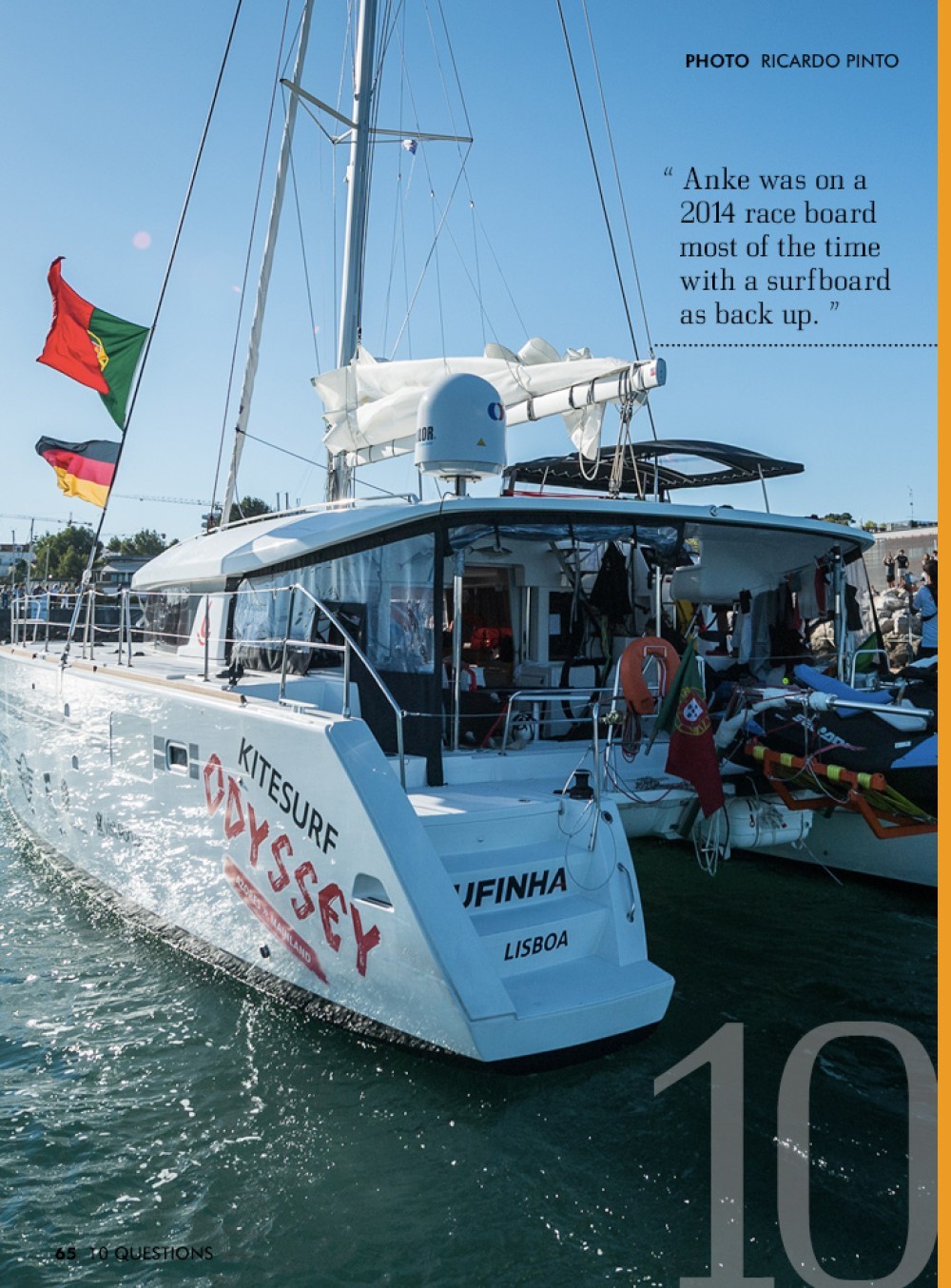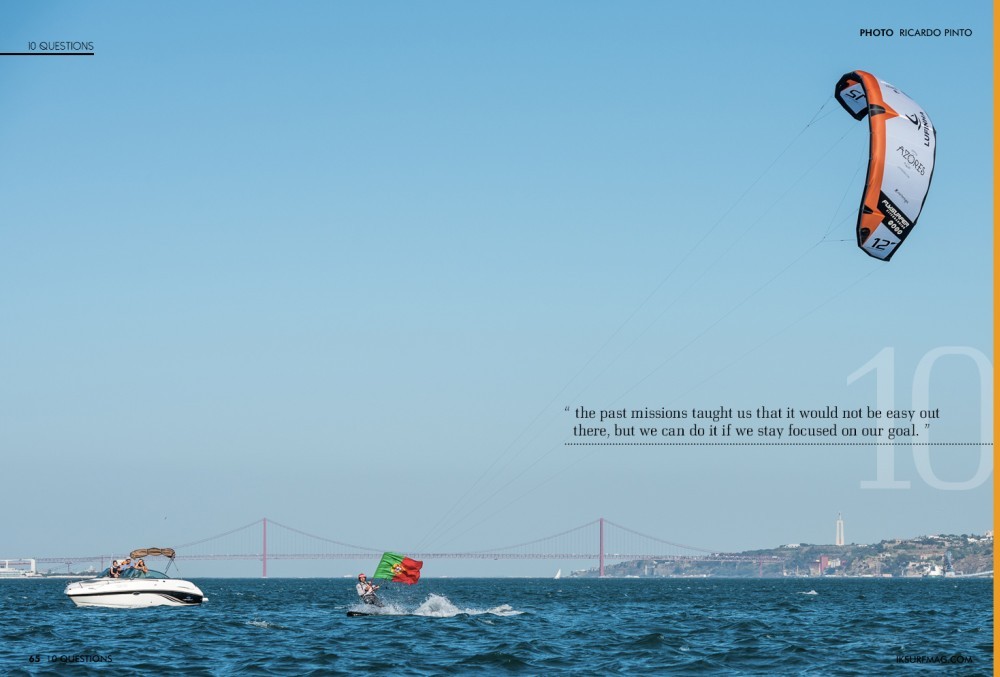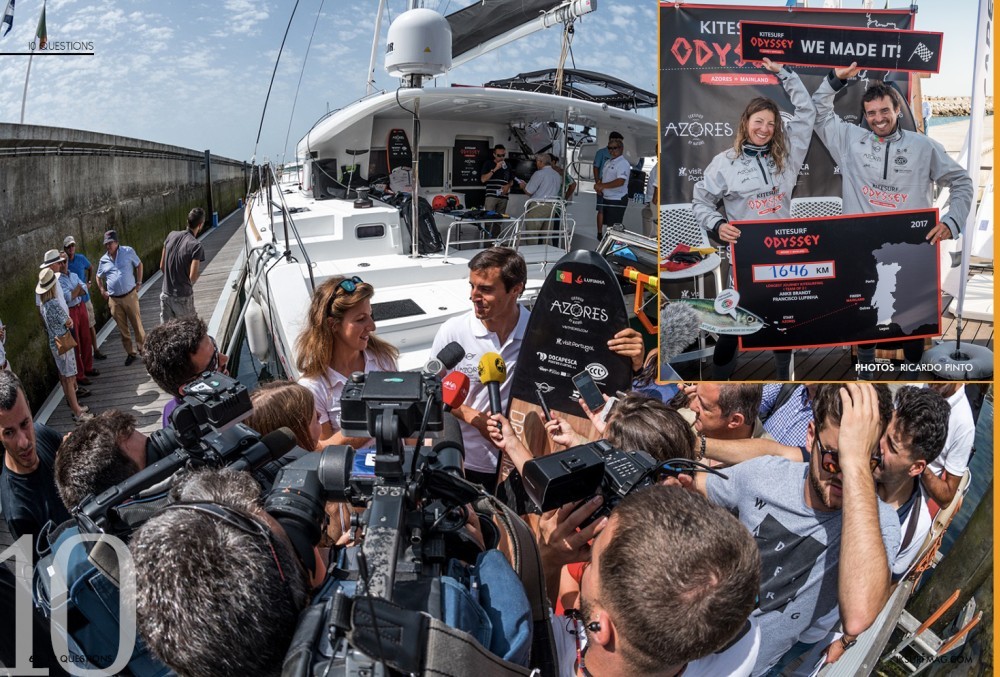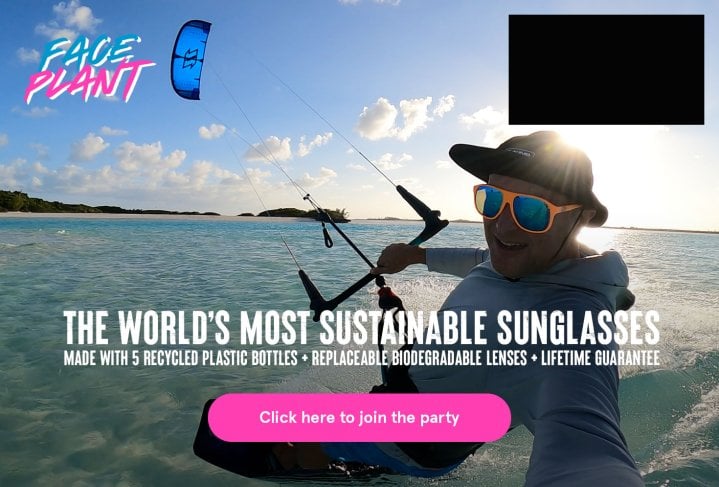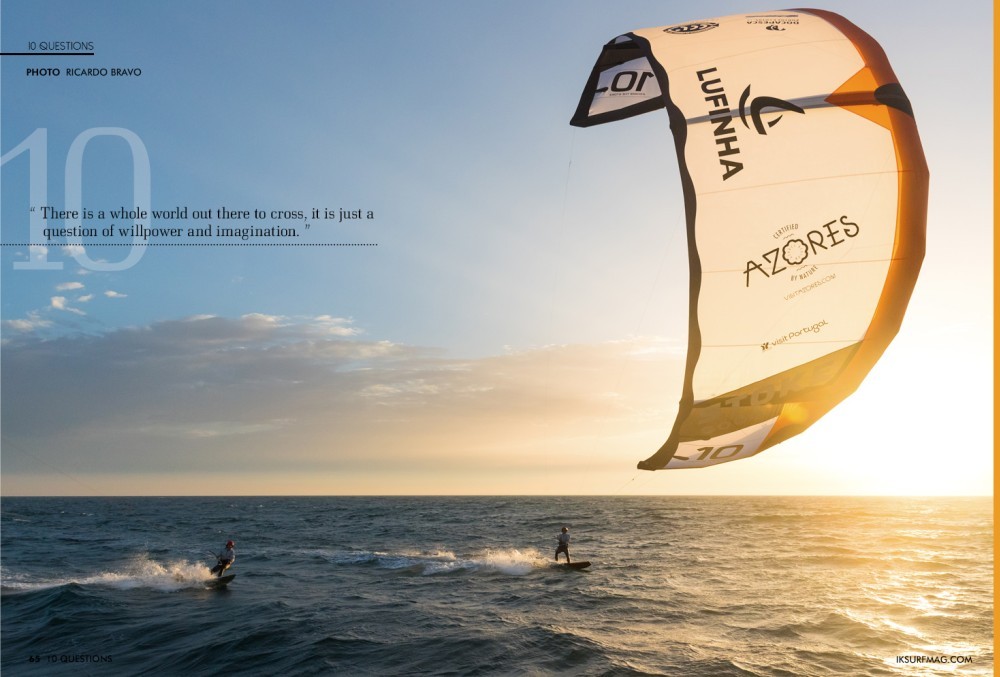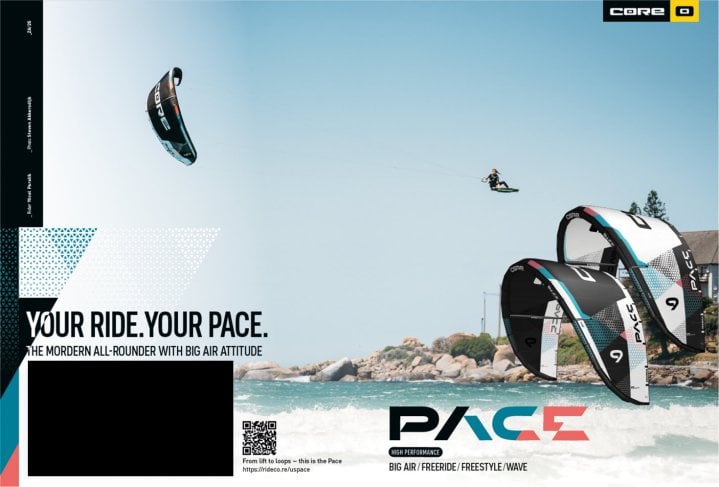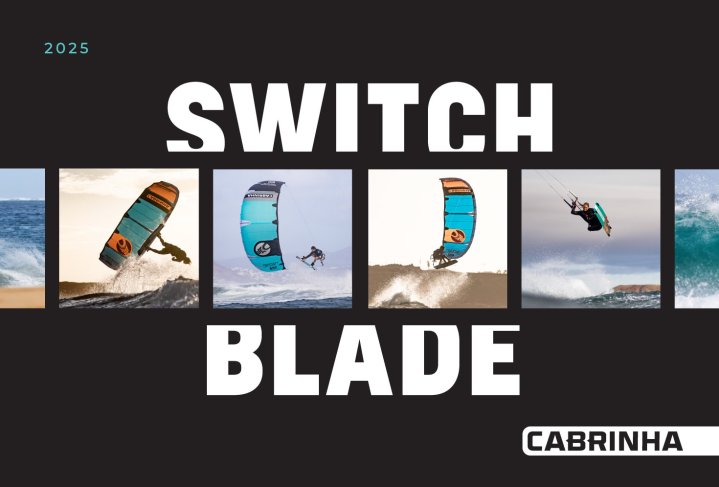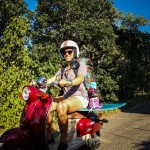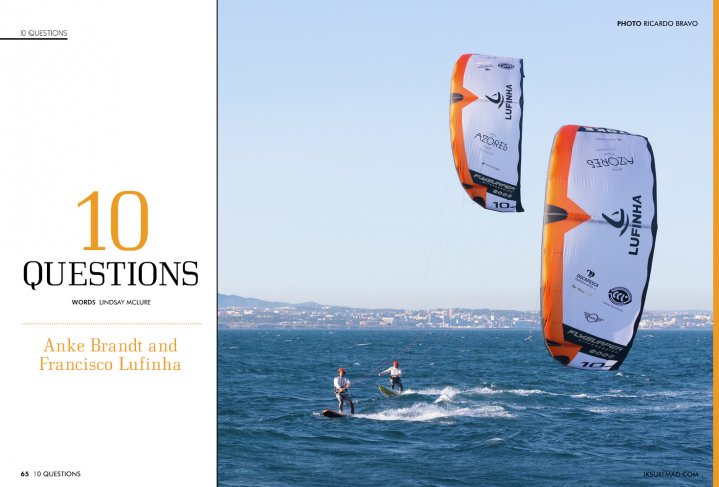
Ten Questions - Kite Odyssey
Issue 65 / Fri 20th Oct, 2017
Anke Brandt and Francisco Lufinha just successfully completed a 1,646 km open water crossing, from Ponta Delgada to mainland Portugal, and clinched a new world record! Don’t miss Ten Questions about how these two conquered the open sea!
Francisco and Anke just completed the Kite Odyssey, a mammoth 1646km crossing from the Azores in the middle of the Atlantic to mainland Portugal, Lindsay McClure caught up with them to find out more…
Francisco and Anke — could you share a bit about your background, where you’re from, and how you became interested in kiteboarding and chasing world records?
Francisco: I’m from Lisbon, Portugal and I saw kitesurfing for the first time at a beach nearby in 2001. I’ve been a sailor since I was born. After competing in several sailing classes, in 2002, I managed to buy a kite and fell in love with the sport. Combining sailing, wakeboarding, windsurfing, surfing, and paragliding all together was just perfect, and I got addicted. In 2015, I was freestyle national champion, and from then on I wanted to take the kite into more adventurous areas, which led me into offshore crossings and chasing records. My experience with offshore sailing, combined with my kitesurfing passion, has allowed me to explore new ways of kiteboarding with a team by my side and to set extreme new records.
Anke: I was born in Munich, and I grew up in Berlin. It was only through my dad’s passion for sailing that I started racing Optimist and 420 class when I was ten years old. In 2009, I fell in love with kitesurfing. Watersports and paragliding became a priority. Soon after, I started kite racing because it was similar to racing sailboats but more exciting. During my training sessions, I began to go further and further for fun. I never planned to break a record but wanted instead organise a fundraising event for Wings for Life. I planned to circumnavigate Bahrain. During the planning phase I realised that, if everything went right, I could break the current world record for the longest distance kitesurfed. Once I was successful with one project, I wanted to try more. I wanted to know where my limit was. That's when other ideas come up, and I first started to dream about the Atlantic. When Francisco called me up and invited me to his Atlantic crossing, it was a dream come true. I knew this was something I could not do alone.
You just completed a 1,646 km crossing and clinched a new world record, congratulations! Please tell us about the Kitesurf Odyssey.
Anke: Well, where to start; I guess the fact that the wind was against us was the main trigger for several events. We were hoping for favourable winds from the west, northwest or southwest. However, this never materialized. The entire weather system was quite a mess during our trip due to the hurricanes in the US. This meant that the weather predictions were quite unreliable and the wind was mostly against us. The wind was coming from the east and only slowly shifting to the north, causing us to fight an upwind battle.
We were hoping the trip would take 6-7 days, but it ended up being a bit more than nine days. At some point, we were not sure if the trip might take longer or if we could even finish it at all as we were heading straight for Morocco.
Going upwind for ten days on the same tack put a lot of strain on us. Also, it was an issue because some members of our team had to get back to land. One skipper had to be picked up by a container ship to get back home on time. This left us with one skipper less, which made it even harder for the team.
The length of the trip was, of course, also a threat to our food and water supplies. More will be revealed in a documentary, which will follow soon.
When did you first dream up the idea of the crossing from Ponta Delgada to Oeiras?
Francisco: The idea came up after my first challenge, in 2013, when I crossed from Oporto to Lagos, a 564-kilometer journey that took 29 hours. This was when I decided that I wanted to connect the entire Portuguese territory by kite. This was a personal challenge and, at the same time, a mission to give a story to the Portuguese kids that would bring them back to sea, just like our ancestors. At the same time, my goal is to alert the population about the problems that the sea is facing in terms of pollution and fish reproduction.
Anke: Crossing the Atlantic first came into my mind in 2014 when I planned my first trip around Bahrain. Francisco’s invitation made this dream become a reality much sooner than I had hoped for. The rest, now, is history and it’s amazing that I was part of his mission to connect the Portuguese sea.
What are the four pillars of the Kitesurf Odyssey, and why was it important to define these foundations to the project?
Francisco: Determination, Preparation, Faith and Teamwork
Without determination, our ideas would never leave paper, and we could not overcome any of the obstacles that we face.
Preparation is critical, and not only physical training but all the logistics and the safety plans. We’ve found that everything will fail at least once, so we need to have several backup options to turn to.
Faith for me is the strongest. When everything goes wrong, and the whole project is about to collapse, either before the start or while at sea, the only way to proceed is to believe that everything will work out well and be confident in our preparation. This mindset has worked fine four times now.
Teamwork is mandatory. Despite the fact that sometimes only the kitesurfers appear on the news, there are between 7 and 13 people working behind the scenes, either on the support boat or land. They all make the challenges happen in a secure and successful way.
What was the most trying moment during the journey?
Francisco: In my opinion, it was when we were halfway, in the middle of the ocean, with NE wind. We weren’t able to head toward Portugal’s mainland. Instead, we were heading to Morocco. That was was a big problem because the wind was increasing to 30 knots near the shore and we were worried that, along with failing our mission, we wouldn’t even make it to Portugal on the support boat. Eventually, the wind ended up shifting north and, with some extra effort, we were able to point to Oeiras.
Every detail must have been meticulously planned. Could you tell us about your choice of equipment — kiteboarding gear, safety gear, support boat, medical supplies and anything else you needed?
Francisco: In terms of kites, we had Flysurfer Stoked kites from 6m to 14m, and two race kites just in case we needed them for their light wind and upwind abilities. Regarding boards, I had a custom board made from Azorean wood, an old race board from 2009 adapted to go cross-wind and downwind comfortably and a Levitaz hydrofoil. I ended up using the Levitaz foil the most due to light wind and the need to go upwind all the time. Due to the conditions, Anke was on a 2014 race board most of the time with a surfboard as back up.
There was a lot of safety gear. We had light sticks and strobe lights on the kites, boards and helmet and a backpack with water and food. We also took emergency flares in the bag in case we were to get lost. A GPS tracker device allowed everybody to follow us and the MOBOS system enabled the support boat to track our position from a tablet. VHF radio and BB Talkin Bluetooth communications allowed us to chat most of the time with one of the skippers.
Due to the long distance and lack of autonomy for motorboats, our support boat was a 45-foot sailing catamaran that was already prepared for watersports because it was used by kitesurfers, windsurfers, wakeboarders and SUPers for weekly charters in the Portuguese Algarve.
In terms of medical safety, we brought a surgeon aboard. We were equipped with everything you could think of to close a big shark bite or to wake someone up from being unconscious. We were very well prepared in that area.
You each have an impressive kiteboarding resume. How did your past experience help prepare you for the Kitesurf Odyssey?
Francisco: Having done three odysseys before helped a lot in terms of avoiding the same mistakes. I figured out clothes to wear under my wetsuit, what to eat or not eat, how to use satellite communication to speak with the land-based team, how to choose a good team, how to pick the right gear and handle the pressure.
Each challenge has its own features but the main safety measures are the same, and we keep upgrading them so we are as safe as we can be, even though we’re in constant danger.
Anke: In addition to gear and safety, the past missions taught us that it would not be easy out there, but we can do it if we stay focused on our goal. The key is to believe in yourself, believe in the team and to keep going.
Why did you choose to complete this mission as a team?
Francisco: My previous mission was 874 kilometres, and I started to hallucinate at the beginning of the second night, after 35 hours of non-stop kiting. So, despite my desire to test my limits, I knew that I couldn’t be awake long enough to cover twice the distance. So, I decided to invite Anke for the challenge as she is the toughest kitesurfer I know. Together, I knew we had a good chance of making it!
How was the crossing in Portugal different from other challenges you’ve completed?
Anke: My previous missions were all completed in one go. I had a timeframe, I checked the weather and went when it was favourable. After I left I didn’t stop; I just went until I arrived or fell asleep. Of course, we also faced times without wind, especially during our last missions.
Because of the enormous distance, we covered on this trip, we had to rotate through sleeping shifts. Our rotations were between 4 and 10 hours long. During our breaks, we needed to eat, sleep and stretch. I would wake up stiff with my joints hurting, but I knew I had to get back into my wet wetsuit and do it all again, day or night, to reach the goal. Also, every time I went out, the conditions were different. It was a big, mental test.
There’s no doubt you had a strong support team — who do you have to thank?
Francisco: We have to thank 13 amazing men and women who helped make this possible. Their photos are all on my website, http://www.franciscolufinha.com, and each one of them contributed in a specific area where we needed help, including communication, boat crew, health and logistics.
Anke: I couldn’t agree more. From my side, I especially have to thank Francisco for his trust and support. He has done a tremendous job putting it all together and thinking of every detail.
What advice would you offer to kiteboarders out there who are interested in long-distance kiteboarding?
Francisco/ Anke: Go for it, but gradually. Start with long, downwinders near the coast. When you’re ready to increase your distance, get a good team to support you by boat. Always have at least one GPS tracker, in case anything goes wrong, and tell someone on shore where you are going and how they can follow your GPS position. Don’t go against the wind because it consumes ten times more energy than going downwind or across the wind. Take a camera because you will want to record those amazing emotions that you will feel when kitesurfing across the open sea!
What’s next?
Francisco: There is a whole world out there to cross, it is just a question of willpower and imagination. It’s important is to find the right window of wind and great sponsors. For now, I will take watersports fans aboard the sailing catamaran to experience the south of Portugal.
Anke: The world is my playground. For now, I want to enjoy what just had happened. It was an incredible experience that allowed me to find new limits within myself. Something will come up for sure, but nothing is set in stone; I’m still dreaming.
Videos
By Lindsay McClure
Lindsay is a pro rider from Hood River in the USA, she works for IKSURFMAG as our Features Editor and is an integral part of the team. Lindsay is really into wakestyle riding and can be found in the Hood River Slider Park during the summer months, she also travels all over the world with the World Class Academy helping younger riders develop through kiteboarding!


